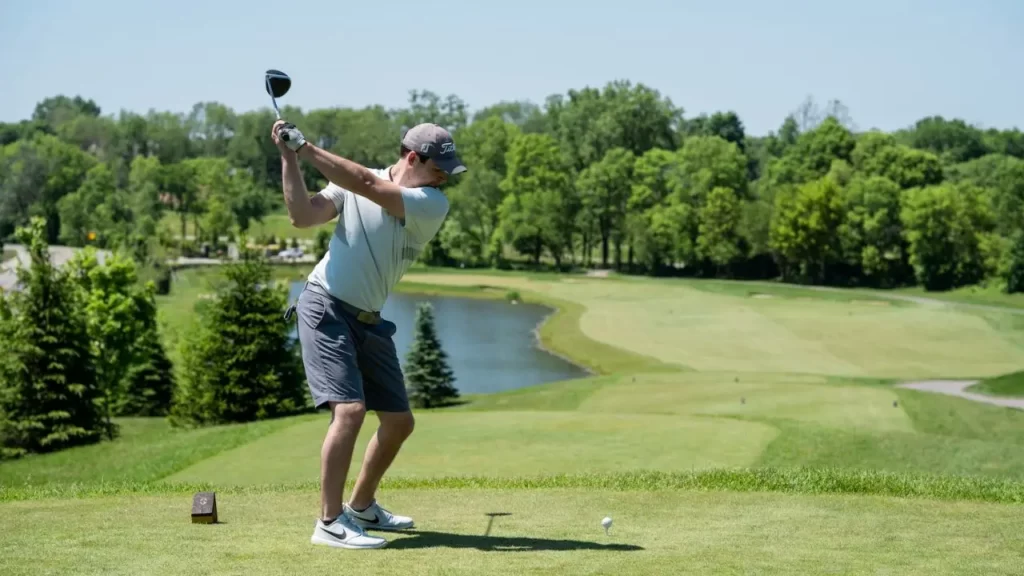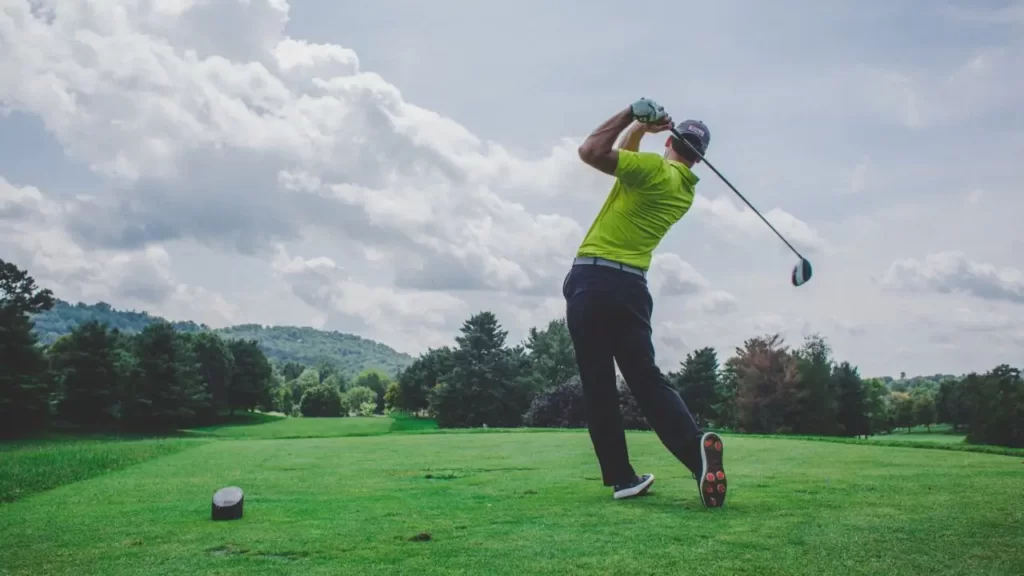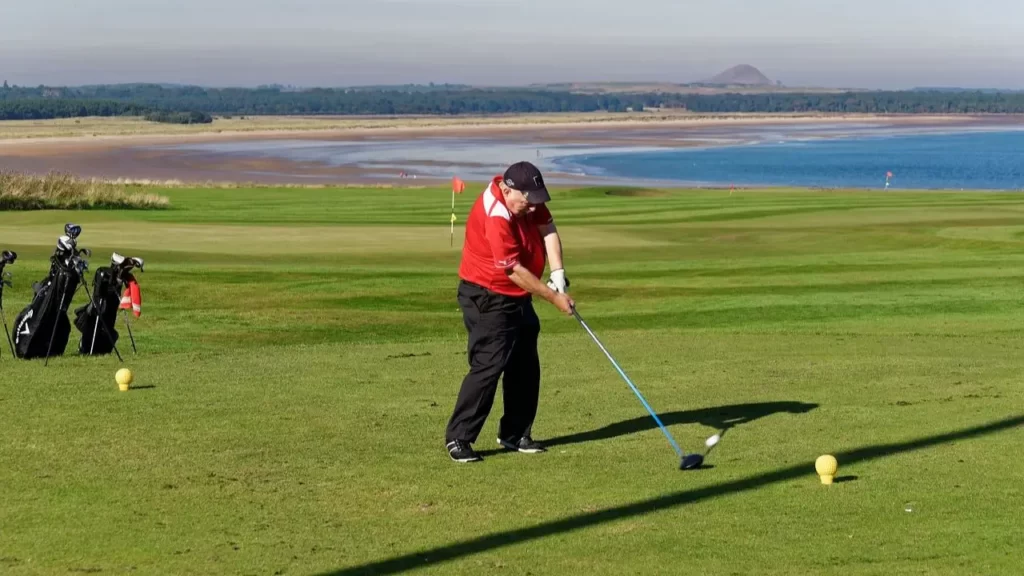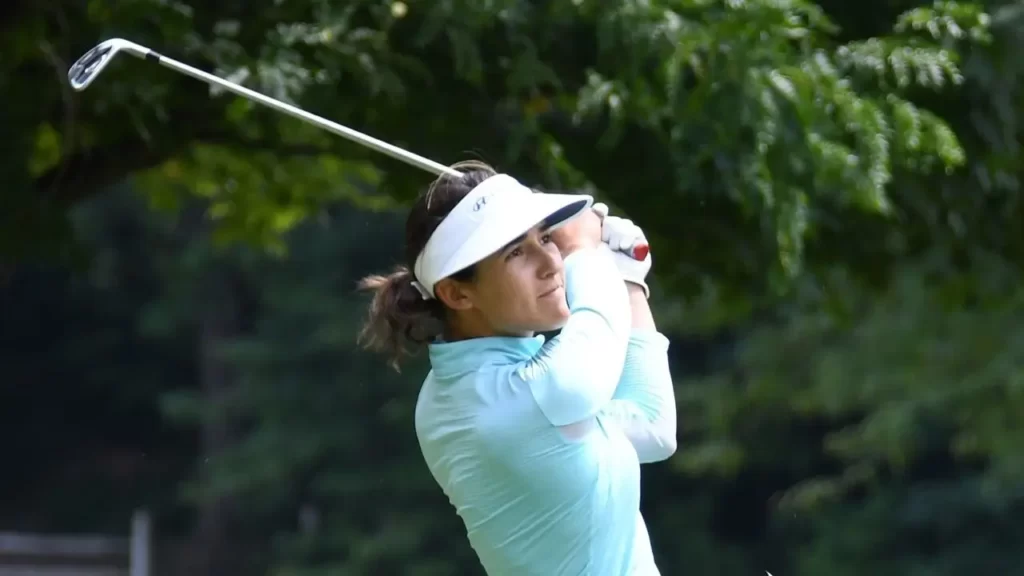Fore! Explained: The History and Significance in Golf
Discover the Origins of ‘Fore’ in Golf: A Shout that Saves Lives! Yelling ‘Fore’ is not just a tradition; it’s an essential safety protocol on the golf course. Learn why and when to use it to protect yourself and fellow players and respect the game’s rich heritage.

Key Takeaways
Historical Roots of ‘Fore’: The term ‘Fore’ originated as “fore-caddie” in Scotland and has evolved into a vital part of golf’s safety protocol and etiquette.
Safety and Alertness: Yelling “Fore” isn’t just tradition; it’s a safety measure that protects players by warning of incoming shots.
Golf Etiquette and Respect: Yelling “Fore” is a sign of respect for fellow golfers and an essential aspect of golf etiquette, promoting good sportsmanship.
Rich Golfing Tradition: This practice has been in place since the 1800s, reflecting the deep historical roots of golf culture.
Player Responsibility: Knowing when and how to yell “Fore” is the responsibility of every golfer, ensuring the safety and well-being of all players on the course.
Introduction
Golf is a sport that has been around for centuries and has evolved over time with its own set of traditions, rules, and etiquette. For those who are unfamiliar with golf, you may have heard the term ‘fore’ being yelled at on the course. But what does it mean?
In this article, we will explore the origin of ‘fore’ in golf and its meaning and usage. The origins of ‘fore’ in golf can be traced back to Scotland, where the modern game of golf originated.
The word ‘fore’ comes from the Scottish phrase “fore-caddie,” which was used to describe a person who walked ahead of players to spot their balls. Over time, this phrase was shortened to just “fore” and became a warning cry on the course.
In modern-day golf, ‘fore’ is used as a warning cry to alert other players that an incoming shot may hit them or their equipment. This warning cry is essential for safety reasons, as it gives other players enough time to take cover or protect themselves from an incoming ball.
Enjoying this article? Read more:
Check out this video below from Golf Warehouse TV‘s YouTube channel:
If someone mishits their shot or hits it too far off-course towards another group playing nearby, yelling ‘Fore’ becomes crucial. Golfers should always be aware of their surroundings on the course and be mindful of other players in neighboring areas.
Yelling “Fore” is not only good etiquette but also necessary for safety reasons. Golf courses can be dangerous places if players are not careful or mindful of others around them.
So it’s important to know when to yell “Fore” and understand why it’s so essential in golf culture today. Yelling “Fore”, although originally derived from Scottish golf tradition regarding caddies walking ahead and spotting balls for higher-ranked individuals, has now become an integral part of modern-day golf culture by serving as both a warning system for mishit shots and as an essential etiquette rule on every golf course worldwide by demonstrating respect toward fellow golfers.

Historical Origin of 'Fore'
The use of the word “fore” in golf is a tradition that dates back to the Scottish golfing tradition of the 1800s. At first, it was used as a warning call to those ahead on the course to let them know that a ball was coming their way. This allowed them time to take cover or move out of harm’s way.
It is believed that ‘fore’ originated from the old Scottish term “forecaddie”, which meant someone who walked ahead of players and signaled where their ball landed. The forecaddie would yell “fore” when they saw a player hit his ball, warning others down the fairway of an incoming shot.
As golf grew in popularity, this system became less practical, and players started to use it themselves. Since then, yelling “fore” has become an essential aspect of golf communication and etiquette.
It’s common for golfers to yell “fore” after a shot because it warns other players about incoming shots. Failure to do so can result in severe injuries.
Professional golf rules also require players who hit errant shots toward spectators or other players to yell “Fore!” immediately and loudly so they have enough time to get out of harm’s way. Saying ‘Fore!’ is one of many traditions that highlight how important safety is on any course around the world; this lingo has found its place in modern-day golf as a crucial element for communication between fellow players and ensures maximum protection and safety on the golf course!
Enjoying this article? Read more:

Meaning and Usage of 'Fore' in Golf
When it comes to playing golf, ‘fore’ is a term that’s widely used and understood by all golfers. It is shouted as a warning when a player hits a ball that may be headed toward someone else on the course. The origin of this golf term can be found in Scottish dialects, where ‘fore’ was used as an abbreviation of the word ‘before’ and was commonly used in hunting to warn others of incoming game.
Golf culture places great importance on communication between players, and yelling “fore” has become an integral part of golf terminology. When you yell “Fore!” on the course, you are doing more than just alerting others of an incoming ball; you are also showing respect for other players, demonstrating good sportsmanship, and adhering to important rules of etiquette.
Saying “Fore!” after mishitting your shot is important because it helps prevent injuries to other players on the course. If someone is not paying attention or is standing too close to you while you take your swing, yelling “fore” can alert them to potential danger so they have time to move out of harm’s way. Remember that safety should always come first on the golf course! In professional golf rules, failing to yell “Fore!” could result in a penalty stroke if someone gets hurt as a result.

Etiquette and Rules Around Yelling 'Fore'
Golfers yell ‘Fore!’ as a warning to others on the course, but when should you shout it? Knowing when to yell ‘Fore’ is essential to playing safe golf.
It is customary to yell ‘Fore’ when you mishit your shot and the ball veers off course towards other golfers. By doing so, you warn other golfers of potential danger and give them time to take evasive action.
Yelling ‘Fore’ has become a critical part of golf culture, and it is considered an important safety protocol. However, there are some rules around the use of this term.
For instance, it’s always important to follow the proper etiquette when yelling ‘Fore’. You should never use this term as a warning if no one is in danger.
Doing so may cause undue panic among players or disrupt their concentration. If someone yells “Fore” in golf at you or your group while on the course, it’s crucial that you know what to do next.
The first thing is not to panic but instead to look around for any incoming balls immediately. If you see a ball coming in your direction, try to make yourself as small as possible by crouching down or hiding behind something like trees or bushes until the danger has passed.
Yelling “fore” in golf is an essential part of golf etiquette that has been around since the Scottish golf tradition began back in the 1700s. It’s important to always follow proper golf course etiquette by warning other players whenever necessary, using proper golf terminology such as “fore.” Remember that shouting ‘fore’ should only be done when there’s potential danger on the course; timing matters! Also, note that yelling ‘fore’ will not absolve you from liability if someone gets hurt; hence, safety comes first!
Enjoying this article? Read more:
Check out this video below from The Pro Shop‘s YouTube channel:
Common Misconceptions About 'Fore'
There are a few common misconceptions about the term ‘fore’ in golf. One of the biggest is that it’s only used to warn other players that their ball is coming their way. While this is certainly one use of the term, there are actually several other ways in which ‘fore’ can be used on the golf course.
For example, ‘fore’ can also be used as a warning to spectators who may be standing too close to the action. In professional golf tournaments, for instance, there are often large crowds gathered around each hole, and it’s important for players to shout ‘fore’ if their ball looks like it might stray from its intended path and potentially hit someone in the crowd.
Another common misconception about ‘fore’ is that you should always yell it as soon as you hit your shot. However, this isn’t necessarily true either.
In fact, yelling ‘fore’ when there’s no need can actually be counterproductive and cause unnecessary confusion on the course. Instead, you should only yell ‘fore’ if your ball looks like it might hit someone or something.
Some people believe that shouting ‘fore!’ is simply good manners or a polite formality of golf etiquette. While this may be partly true (after all, it’s always better to err on the side of caution), using ‘fore’ properly goes beyond just being polite; it’s an essential aspect of playing safe and following proper golf rules and traditions.
Enjoying this article? Read more:

'Fore' in Pop Culture
The term ‘fore’ has found its way into pop culture over the years. It is often used in movies and TV shows to indicate impending danger, just like it does in golf.
For instance, in the movie Caddyshack, Rodney Dangerfield’s character yells ‘Fore!’ before he takes his shot, even though there is nobody on the course with him. This scene showcases how ingrained fore has become in our culture.
Another example of pop culture embracing the term is seen in the popular video game franchise Mario Golf. The game features several characters from Nintendo games as golfers who play on various courses with different obstacles.
When a player hits a ball close to or at another character, they yell out “Fore!” warning them of incoming danger. Moreover, musicians have also referenced ‘fore’ to add more depth and meaning to their lyrics.
For instance, Bob Dylan’s song “Highway 61 Revisited” includes the line “the motorcade has just passed by,” followed by “the riders cry ‘fore!'” This reference highlights how versatile and impactful this golf term can be. Overall, whether it’s through movies, video games, or music, it seems that fore has become a part of our everyday language and cultural references without us even realizing it!

Enjoying this article? Read more:
Check out this video below from Golfing Is Best‘s YouTube channel:
Other Important Golf Terminologies
When it comes to golf, there are several terminologies you may come across while on the course that may sound strange. However, it is important to understand what they mean, as they may be crucial in ensuring your safety and communication with other players. Here are other important golf terminologies you should know:
- Mulligan: This term refers to a do-over, whereby a player can retake their shot without any penalty. The use of mulligans is not allowed in professional golf rules, but it is common among amateurs.
- Birdie: In golf, scoring under par on a hole is an achievement called a birdie. For example, if the par for a hole is four and you score three shots, then you have achieved a birdie.
- Bogey: On the other hand, when a player scores over par on a hole despite their best effort, it’s called a bogey. For instance, if the par for a specific hole is four and you take five shots before finishing it up, then you have yourself a bogey.
Knowing these terms will help you understand better what is happening around the course and enable you to communicate effectively with other players. Golf terminology forms part of golf culture and traditions that have been passed down for generations since its Scottish origins in the 15th century.
While some phrases may seem peculiar at first glance when playing or watching professional tournaments on TV or online streaming platforms like YouTube or Twitch.tv, they play an essential role in enhancing everyone’s experience—players and spectators alike—on the golf course by promoting safety and fair play while adding an extra layer of excitement through friendly competition among peers!
Enjoying this article? Read more:

Conclusion
“Fore” is a vital term in golf that has historical and cultural significance. It helps warn other golfers of incoming danger while promoting safety, etiquette, and good sportsmanship on the course.
Golfers should be aware of when to use the term to prevent any mishaps. Additionally, yelling ‘fore’ is not just for your safety but also for the protection of other golfers and property around the course.
Mishitting your shot can happen to anyone; therefore, it’s crucial to remain alert and attentive during your game. Whether you’re playing professionally or just enjoying a casual round with friends, observing golf course safety measures should be a priority.
Understanding various golf phrases, like fore, is an integral part of golf culture that has been passed down through generations. The Scottish tradition has played a crucial role in popularizing this shout-out word worldwide.
Therefore, as you engage in this amazing sport with its unique terminology and rules, take time to appreciate its rich history and heritage. Overall, fore may seem like an ordinary word at first glance; however, it carries significant meaning behind it in the world of golf.
Knowing when to yell ‘Fore’ and observing proper etiquette when shouting it out loud on the course shows your respect for the game and others playing with you. So next time you’re out there on the greens playing with others, remember if you see another’s shot going astray, “Fore!”
Share this Post
Toni Benedito
Keep Reading
Follow Us
Recent Posts

How Do Pro Golfers Get Paid? The Business of Golf
Professional golfers get paid both before and after tournaments. Before a tournament, they receive appearance fees, sometimes exceeding $1 million, to attract top players. After the tournament, earnings depend on their placement, with the PGA

How Much Do Golf Players And Pros Make? You Won’t Believe It!
Professional golfers earn substantial incomes through tournament winnings, sponsorship deals, and endorsements. Top players on the PGA Tour can make millions annually, with significant earnings from prize money and lucrative brand partnerships. For example, Rory

The Shocking Cost: How Much Does It Cost to Fly with Golf Clubs?
Flying with golf clubs can be a hassle, but it’s worth it for avid golfers. Costs vary by airline, ranging from $30 to $150 per way. Southwest Airlines offers a generous policy, allowing one set

Why Do Golfers Tape Their Fingers Before Hitting the Course?
Golfers tape their fingers to prevent injuries from repetitive motions, provide support for existing injuries, and improve grip comfort. It’s a popular technique among amateurs and pros alike, offering a lightweight and effective solution compared

How Much Does a Round of Golf Cost? Are You on Par?
The cost of a round of golf varies widely based on factors like course type, location, and time of play. Public courses typically range from $30-$100 per round, while exclusive ones like Augusta National or

Hidden Fees: How Much Does It Cost To Rent a Golf Cart
Wondering how much it costs to rent a golf cart? Explore factors like location, rental duration, and cart type impacting prices. Daily rates range from $50 to $80, while weekly rentals can vary from $200
Table of Contents







